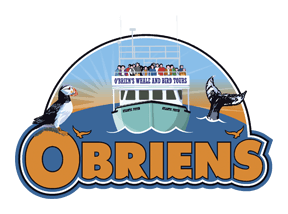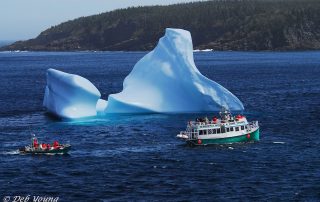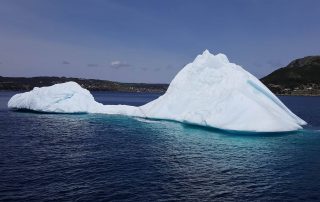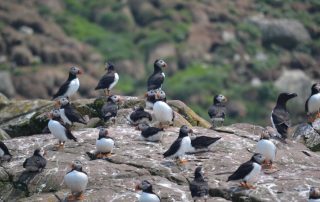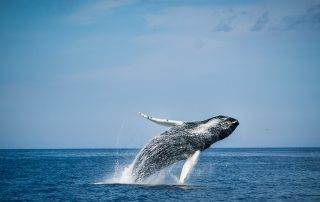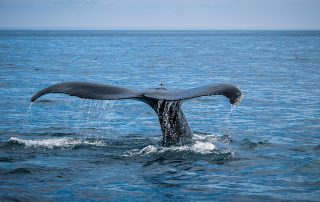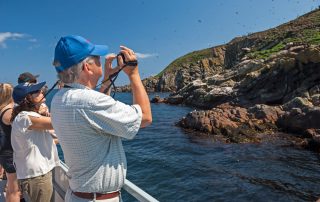Hop aboard and set sail into an unforgettable adventure with Atlantic puffins, majestic humpback whales, and stunning icebergs. Watch seabirds plunge into the sea for their next meal, spot bald eagles soaring above, and marvel as sunlight dances across towering ice formations.
Join us on a cruise to the Witless Bay Ecological Reserve—home to North America’s largest Atlantic puffin colony, with over 500,000 puffins, and millions of other seabirds including common murres, black-legged kittiwakes, and razorbill auks.
Witness the awe-inspiring display of humpback whales as they breach, slap their fins, and play just meters away—an unforgettable spectacle! With the world’s highest concentration of humpbacks returning each summer, magical moments are practically guaranteed. Nature sets the schedule, so every cruise is a unique experience.
Come for the whales, the birds, and the wild beauty of Newfoundland’s coast. Stay for the warm welcome and world-class hospitality that O’Brien’s are known for!
Whale & Iceberg Facts
- Whale sightings are highest in July and Icebergs can typically be seen from May until early June.
- The best time for Seabird viewing is from May until early September.
- Icebergs come in all shapes and sizes and only 10% appear above the surface of the ocean.
- Sightings vary by season and cannot be guaranteed (birds, whales and icebergs).
- It is important to note that icebergs do not frequent our waters every year.
The Details
Duration: Approximately 2 hours
Location: O’Brien’s Dock in Bay Bulls
Our new Atlantic Puffin vessel is Transport Canada Certified and equipped with a fully enclosed heated cabin with panoramic viewing, canteen, bar, and restrooms. Non-motorized wheelchair accessibility.
Need shuttle service to our tour?
We pick up at hotels in St. John’s and surrounding areas (additional charge).
September Tours
Seabirds begin taking flight back out to sea in early September, at this time we change our tour route slightly and it becomes a geological adventure. Sail along the rugged coastline, named Top Coastal Destination in the World by National Geographic. Enjoy the view as you sail past sea stacks, caves and waterfalls. Next take in the view of a natural wave powered geyser, locally known as the Spout.
